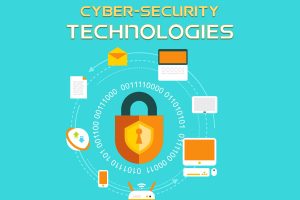
Ensuring the security of technology tools within a company requires a comprehensive approach that addresses various aspects of cybersecurity. Here are some key steps companies can take to enhance the security of their technology tools:
Implement Strong Authentication Mechanisms:
- Require employees to use strong, multi-factor authentication methods such as passwords combined with biometric verification or one-time codes.2. Regular Software Updates and Patch Management:
- Keep all software, including operating systems, applications, and security tools, up-to-date with the latest patches and updates to address vulnerabilities.2
-
Network Security Measures:
- Employ firewalls, intrusion detection systems (IDS), and intrusion prevention systems (IPS) to monitor and protect the company’s network from unauthorized access and malicious activities.
- Data Encryption: Encrypt sensitive data both in transit and at rest to prevent unauthorized access in case of data breaches.
-
Access Control and Least Privilege Principle:
- Implement access controls to ensure that employees only have access to the data and systems necessary for their roles. Follow the principle of least privilege to minimize potential damage from insider threats.
-
Regular Security Audits and Assessments:
- Conduct regular security audits and vulnerability assessments to identify weaknesses in the company’s technology infrastructure and address them promptly.
-
Employee Training and Awareness:
- Educate employees about cybersecurity best practices, such as recognizing phishing attempts, creating strong passwords, and safeguarding sensitive information.
-
Incident Response Plan:
- Develop and regularly update an incident response plan to guide employees on how to respond effectively to security incidents such as data breaches or cyberattacks.
-
Vendor Risk Management:
- Assess the security posture of third-party vendors and service providers that have access to the company’s systems or data to ensure they meet security standards.
- Continuous Monitoring and Threat Intelligence: Employ continuous monitoring tools and leverage threat intelligence to detect and respond to emerging threats in real time.
-
Data Backup and Recovery:
- Regularly backup critical data and test the restoration process to ensure business continuity in the event of data loss or ransomware attacks.
-
Compliance with Regulations and Standards:
- Stay compliant with relevant industry regulations and cybersecurity standards to avoid legal and financial consequences associated with data breaches.
By following these steps and adopting a proactive approach to cybersecurity, companies can significantly reduce the risk of security breaches and protect their technology tools and assets.
-
Secure Development Practices:
Incorporate security into the software development lifecycle by conducting code reviews, implementing secure coding practices, and performing regular security testing such as static and dynamic code analysis.
-
Endpoint Security:
- Utilize endpoint protection solutions such as antivirus software, endpoint detection and response (EDR) systems, and mobile device management (MDM) tools to safeguard endpoints like computers, smartphones, and tablets from malware and other threats.
-
Cloud Security:
- If utilizing cloud services, ensure proper configuration and security measures are in place to protect data stored in the cloud. Implement strong access controls, and encryption, and monitor for unauthorized access or unusual activities.
-
Physical Security Measures:
- Protect physical access to data centers, server rooms, and other critical infrastructure by implementing access controls, surveillance systems, and security protocols to prevent unauthorized entry or tampering.
-
Security Incident Response Team:
- Establish a dedicated team or designate individuals responsible for responding to security incidents promptly. Ensure they have the necessary training, tools, and authority to coordinate an effective response to cybersecurity threats.

-
Security Culture:
- Foster a culture of security awareness and accountability throughout the organization by promoting open communication about cybersecurity risks, encouraging reporting of suspicious activities, and rewarding employees for practicing good security hygiene.
-
Regular Risk Assessments:
- Conduct periodic risk assessments to identify new threats, vulnerabilities, and emerging risks to the company’s technology infrastructure. Use the findings to prioritize security investments and improve overall cybersecurity posture.
-
Executive Oversight and Governance:
- Ensure that senior leadership is actively involved in setting cybersecurity priorities, allocating resources, and providing oversight to ensure that security initiatives are aligned with business goals and objectives.
By integrating these additional measures into their cybersecurity strategy, companies can further enhance the security of their technology tools and better protect themselves against evolving cyber threats.
-
Security Awareness Training:
- Provide regular training sessions and resources to educate employees about the latest security threats, social engineering techniques, and best practices for maintaining a secure work environment. Encourage employees to be vigilant and report any suspicious activities promptly.
-
Secure Configuration Management:
- Implement configuration management practices to ensure that systems and devices are securely configured according to industry standards and best practices. Regularly review and update configurations to address new threats and vulnerabilities.
-
User Behavior Analytics:
- Employ user behavior analytics (UBA) tools to monitor and analyze user activities within the network. By identifying abnormal or suspicious behavior patterns, organizations can detect insider threats, compromised accounts, and unauthorized access attempts.
-
Secure Supply Chain Management:
- Assess the security posture of third-party vendors, suppliers, and partners who have access to the company’s networks or data. Establish security requirements in vendor contracts and regularly audit their compliance with security standards to mitigate supply chain risks.
-
Secure DevOps Practices:
- Integrate security into the DevOps process by implementing automated security testing, code scanning, and vulnerability assessments throughout the software development lifecycle. This ensures that security is prioritized from the initial stages of development to deployment and beyond.
-
Red Team Exercises:
- Conduct red team exercises to simulate real-world cyberattacks and test the effectiveness of security controls, incident response procedures, and employee readiness. Use the insights gained from these exercises to identify and address weaknesses in the company’s security posture.
-
Continuous Improvement and Adaptation:
- Cybersecurity is an ongoing process that requires continuous improvement and adaptation to stay ahead of evolving threats. Regularly review and update security policies, procedures, and technologies to address emerging risks and vulnerabilities.
-
Collaboration and Information Sharing:
- Foster collaboration with industry peers, government agencies, and cybersecurity organizations to share threat intelligence, best practices, and lessons learned. By working together, organizations can better anticipate and respond to cyber threats collectively.
-
Transparency and Communication:
- Maintain open and transparent communication channels with stakeholders, customers, and regulatory authorities regarding cybersecurity incidents, breaches, and mitigation efforts. Building trust through transparency can help minimize the impact of security incidents on the company’s reputation and bottom line.
-
Executive Sponsorship and Support:
- Ensure that cybersecurity initiatives receive adequate executive sponsorship and support. Senior leadership should champion cybersecurity as a top priority and allocate the necessary resources to effectively address security risks and challenges.
By incorporating these additional measures into their cybersecurity strategy, companies can further strengthen their defenses and minimize the likelihood of successful cyberattacks and data breaches.
